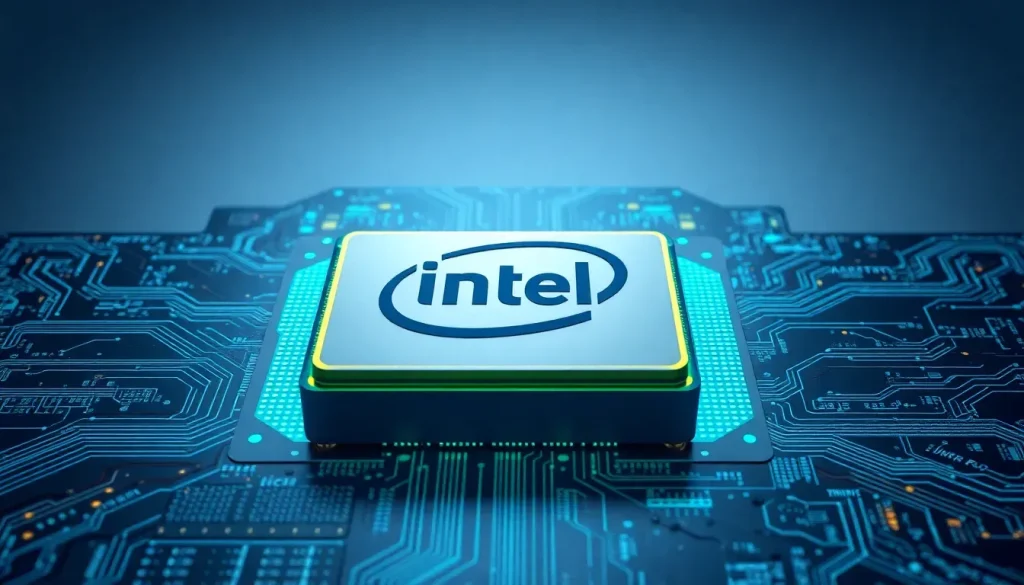Intel Panther Lake hybrid computing architecture improvements

Intel has recently offered a sneak peek into its upcoming Panther Lake processors through an engaging video presentation featuring its engineers. This new architecture represents a significant milestone in Intel's journey towards hybrid computing, showcasing improvements that aim to redefine performance and efficiency. With a wealth of information to unpack, let’s explore what Panther Lake brings to the table for both consumers and manufacturers.
This architecture is not merely an evolution of its predecessor, Lunar Lake, but a transformative leap that enhances the way processors handle workloads, optimizing power consumption without sacrificing performance. The ultimate goal is to transfer the mobile efficiency observed in Lunar Lake to a comprehensive PC ecosystem, allowing manufacturers greater flexibility in design while managing costs effectively.
Intel Panther Lake: advancing hybrid computing with substantial enhancements
The foundation of Panther Lake lies in its innovative three-tier execution model, which includes performance cores, efficiency cores, and a dedicated low-power island that operates independently at the interconnection and cache level. This island is no longer an auxiliary component as seen in Lunar Lake; instead, it functions as a self-sufficient subsystem within the SoC, complete with its own power domains, frequency controls, and direct communication with the memory controller.
This design allows the system to keep the low-power island active for tasks such as multimedia playback, video streaming, or background processes while the rest of the chip can enter a complete sleep mode. As a result, this architecture minimizes energy costs associated with the main ring bus, enabling the CPU to operate in deeper C-states without losing functionality.
While Lunar Lake introduced this concept, Panther Lake enhances it significantly through two critical aspects: the upgraded performance of the improved E-Core Skymont and a refined hierarchy for task distribution. This means that the CPU can maintain a state of suspension most of the time, leveraging the E-Cores’ capability to handle traditional workloads, including simultaneous video playback and office tasks, without engaging the P-Cores unnecessarily.
Introducing a refined Thread Director with real-time energy profile management
One of the most noteworthy advancements in Panther Lake is the enhanced management of workload allocation. The new version of Thread Director features more granular telemetry and dynamic mapping between instruction types, effective frequency, and task classes.
In previous generations, the operating system received basic guidance about which core was most efficient. However, Panther Lake takes it a step further by allowing the hardware to assess the energy profile of the SoC, thermal restrictions, and execution density in real-time to determine which block should be activated. This "fine-grained energy" approach enhances accuracy and speed in managing core activity.
The system can swiftly transition between energy domains and execute predictive performance management. This mechanism can confine complete tasks within an efficiency zone, escalate to a hybrid area upon detecting saturation, and finally activate the full core topology when necessary. This evolution is what Intel refers to as its move towards definitive hybrid computing.
Microarchitecture advancements that may redefine performance
Moving to the microarchitecture level, the E-Cores of Panther Lake (Skymont V2.0) are not mere replicas of their Lunar Lake counterparts. They have been specifically designed to sustain more complex workloads without the need for P-Core support, featuring an expanded front-end, increased decoding width, and a deeper branch prediction subsystem.
These units are capable of achieving higher frequencies, with Intel claiming boosts over 4.5 GHz. This autonomy allows them to maintain performance metrics without needing to activate the main ring bus or the CPU tile. Meanwhile, the P-Cores have been redesigned for more direct integration into the shared ring, facilitating resource sharing with E-Cores under a simplified coherence scheme, which reduces latency in mixed contexts.
This architecture is conceptually similar to Lunar Lake combined with the Arrow Lake ring bus, as previously speculated. Panther Lake also redefines internal energy management by introducing independent power domains per core, employing heuristic voltage and frequency control. Instead of static regulation, this model becomes predictive, adjusting voltage based on instruction type, execution duration, and local block temperature. This approach is both innovative and crucial for maximizing efficiency.
Unified power delivery with sustained frequencies and reduced response times
This architectural approach enables the processor to sustain high frequencies across mixed workloads without incurring significant thermal penalties. The structural convergence between P-Cores and E-Cores also allows for a unified power delivery scheme, reducing losses and improving transient response to workload changes.
On the software front, Intel has collaborated closely with Microsoft to ensure that the ecosystem can fully leverage these capabilities. The operating system no longer merely identifies high or low-priority threads; it now recognizes contention zones, grouping similar tasks and deciding whether to keep them within the low-power island, migrate them to the hybrid complex, or distribute them across both.
Windows 11 has been optimized to manage these zones through an internally designated model known as “adaptive heterogeneous,” adjusting scheduling policies based on energy mode (AC or battery) and thermal profiles. This functionality mirrors what AMD has achieved with its Ryzen processors using Precision Boost Overdrive (PBO) but operates directly from the operating system rather than through BIOS microcode.
The definitive leap towards hybrid computing consolidation in PCs and laptops
The end result is a Panther Lake architecture that structurally combines autonomy and performance in one of the most significant strides for Intel towards hybrid computing. Panther Lake is capable of executing multimedia tasks, web browsing, or video calls entirely within the low-power island using the LPE-Cores, achieving far superior efficiency levels while being able to scale to full performance mode with minimal latency during transitions.
For the first time, Intel's design features three domains—efficiency, hybrid, and full performance—that operate as coherent and orchestrated subsystems. It is not merely an improved Alder Lake or an enhanced Arrow Lake; Panther Lake is the first example of a mature hybrid computing architecture designed to anticipate workloads rather than merely respond to them.
This architecture sets the stage for Nova Lake, which is expected to represent a significant leap in performance. As we await the detailed unveiling, it's clear that Panther Lake is more than just an incremental update; it is a meticulously crafted synthesis of the best features from previous architectures, pushing the concept of hybrid computing toward solid ground after years of development.




Leave a Reply